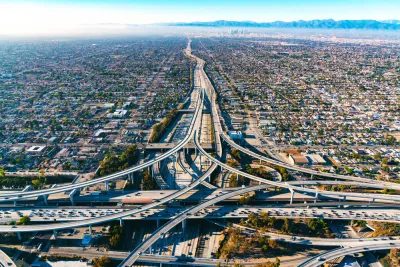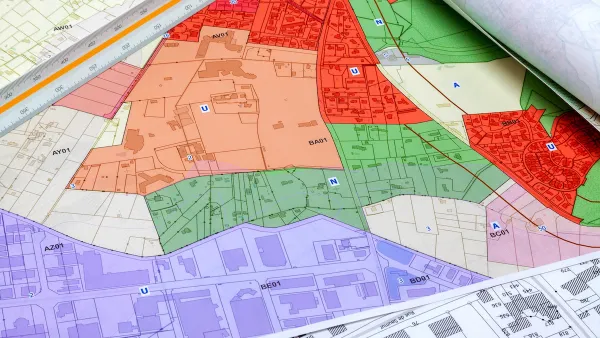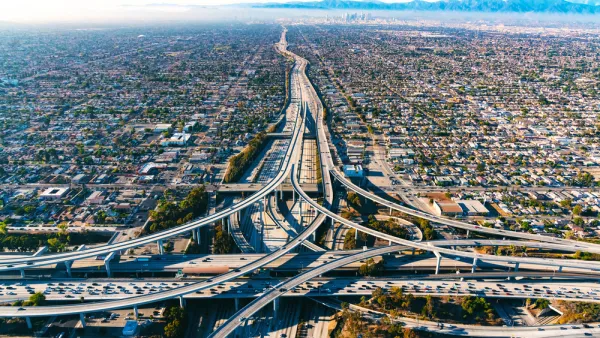The auto-centric development patterns of American cities are a result of decades of misguided, but reversible, policy decisions.

The sprawl that characterizes many modern cities doesn’t have to continue to define them, argues Jocelyn Timperley. “As the world struggles to undo unsustainable systems, as well as the growing inequality between the rich and the poor, cities are making their way back into the spotlight as potential solutions—and missteps.”
Sprawl, as defined in the article by “low-density housing, segregated land uses (meaning housing is separated from shops, workplaces, schools and leisure activities), a lack of local town centers, and limited street connectivity,” increases carbon emissions from transportation and large, single-family homes with bigger carbon footprints. Reid Ewing, professor of city and metropolitan planning at the University of Utah, estimates that “more compact development in the US would lead to a 7 to 10 percent reduction in total transportation carbon dioxide emissions (the largest source of emissions by sector in the US) by 2050, compared to continuing urban sprawl.” Meanwhile, “As of 2015, a single-family detached home in the US used around three times as much energy as an apartment in a building of five or more different units.”
Timperley outlines the history of sprawl in the United States, from its beginnings in early 20th century zoning codes to the suburban boom of the post-World War II era, and how infrastructure spending perpetuates car-centric development.
The article goes on to offer a range of solutions, from relatively inexpensive fixes like crosswalks and bike lanes to major public transit projects and zoning reforms.
FULL STORY: Urban sprawl defines unsustainable cities, but it can be undone

Analysis: Cybertruck Fatality Rate Far Exceeds That of Ford Pinto
The Tesla Cybertruck was recalled seven times last year.

National Parks Layoffs Will Cause Communities to Lose Billions
Thousands of essential park workers were laid off this week, just before the busy spring break season.

Retro-silient?: America’s First “Eco-burb,” The Woodlands Turns 50
A master-planned community north of Houston offers lessons on green infrastructure and resilient design, but falls short of its founder’s lofty affordability and walkability goals.

Test News Post 1
This is a summary

Analysis: Cybertruck Fatality Rate Far Exceeds That of Ford Pinto
The Tesla Cybertruck was recalled seven times last year.

Test News Headline 46
Test for the image on the front page.
Urban Design for Planners 1: Software Tools
This six-course series explores essential urban design concepts using open source software and equips planners with the tools they need to participate fully in the urban design process.
Planning for Universal Design
Learn the tools for implementing Universal Design in planning regulations.
EMC Planning Group, Inc.
Planetizen
Planetizen
Mpact (formerly Rail~Volution)
Great Falls Development Authority, Inc.
HUDs Office of Policy Development and Research
NYU Wagner Graduate School of Public Service




























